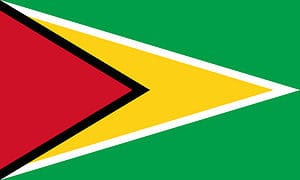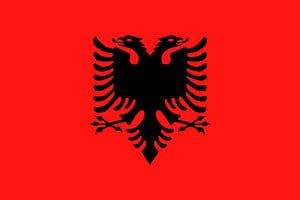Hungary, a landlocked country in Central Europe, is a beautiful place, with much to see and do. It borders seven countries including Romania, Croatia, Slovenia, Austria, Serbia, Ukraine, and Slovakia.
Whether you are just curious about Hungary’s flag or planning a trip to the stunning capital, Budapest, keep reading to learn more about the flag of Hungary.
A Brief History of Hungary

Hungarian nationalism emerged during the mid-1800s because of influences from the Age of Enlightenment and Romanticism.
©ZGPhotography/Shutterstock.com
To better understand the current flag of Hungary, it’s important to know a bit about the country’s history. The history of Hungary begins with the first traces of human habitation in the country, which scientists estimate to be 500,000 years old.
Hungarian nationalism emerged during the mid-1800s because of influences from the Age of Enlightenment and Romanticism. Before Hungary became fully independent, it was part of Austria-Hungary. The Republic of Hungary wasn’t proclaimed until October 23, 1989.
Rome invaded the territory of modern-day Hungary between 35 AD and 433 AD. Waves of migration occurred after. Hungary was recognized as a kingdom by Saint Stephen I, who had authority over the bishoprics and churches. By 1034, Hungary was considered “the shield of Christianity and the protector of Western civilization.” For centuries after, Hungary experienced multiple wars and battles, including the Ottoman Wars, during which Hungarians lived under Ottoman rule.
Historical Flags of Hungary
Hungary has had multiple flags throughout its history, with Hungary’s modern flag holding plenty of meaning. Listed below are four historical flags of Hungary:
Flag of the Principality of Hungary
The Principality of Hungary used a red swallow-tailed flag that was white and red. It was used between 895 AD- 1000 AD. Its design was very different compared to that of the modern flag.
Flag of the Kingdom of Hungary
The Kingdom of Hungary used the same flag as the Principality of Hungary, from 1000 AD to 1038 AD. However, this changed between 1046 AD–1172 AD, when the country used a white and red flag with a Latin cross. The Latin cross was changed to a double cross from 1172 AD to 1196 AD. During the 13th century, the flag slightly changed again. A green triple mountain was added underneath the double Latin cross.
From 1301 to 1382, a striped flag was used to represent the Kingdom of Hungary. The stripes were red and white, with a yellow fleur-de-lis pattern on a blue background. The last flag used by the Kingdom of Hungary before the 1800s was a horizontal bi-color flag with yellow and black. It was used when the Kingdom of Hungary was part of the Habsburg Monarchy and the Austrian Empire.
Flag of the Hungarian Soviet Republic
The flag of the Hungarian Soviet Republic was only briefly flown from March 21 to August 1,1919. It was a simple plain red flag. After this short use, the flag of the Hungarian People’s Republic took over.
Flag of the Hungarian People’s Republic
The flag of the Hungarian People’s Republic was very short-lived, flying from August 2 to August 6, 1919. It contained three horizontal stripes in red, white, and green. It also had a small coat of arms in the center and was crownless. After August 6, 1919, the crown was added back to the flag and the coat of arms and remained until mid/late 1946. This was the flag of the Hungarian Republic and the Kingdom of Hungary. But the flag continued to change. For instance, the flag of the Hungarian People’s Republic from 1957 to 2000 was a simple horizontal tri-color red, white, and green flag.
Hungary’s Current Flag

The flag of Hungary symbolizes strength, faithfulness, and hope.
©Savvapanf Photo/Shutterstock.com
Hungary’s current flag is a horizontal tricolor of red, white, and green. It was first adopted as a state flag on May 23, 1957, and was reaffirmed on June 19, 1990. However, the flag originated before 1848. It is based on the French flag but uses its colors to establish national sovereignty. There are multiple theories as to what the colors represent. One theory is that red symbolizes strength, white is for faithfulness, and green is for hope. Another interpretation is that red stands for the bloodshed in the country’s historic battles, white symbolizes the country’s many rivers, and green represents its mountains.
The photo featured at the top of this post is © Supparsorn/Shutterstock.com
FAQs (Frequently Asked Questions)
When was Hungary’s current flag adopted?
Hungary’s current flag is a horizontal tricolor of red, white, and green. It was first adopted as a state flag on May 23, 1957, and was reaffirmed on June 19, 1990. However, the flag originated before 1848.
When do scientist think humans first inhabited Hungary?
The history of Hungary begins with the first traces of human habitation in the country, which scientists estimate to be 500,000 years old.
Thank you for reading! Have some feedback for us? Contact the AZ Animals editorial team.






